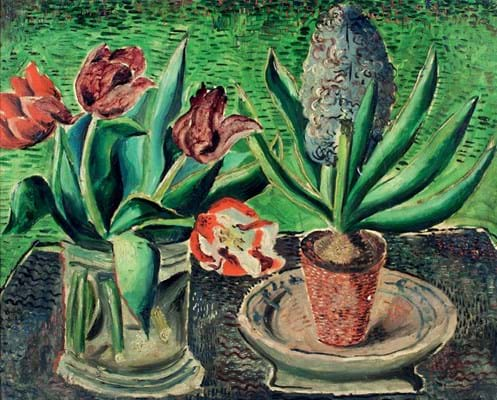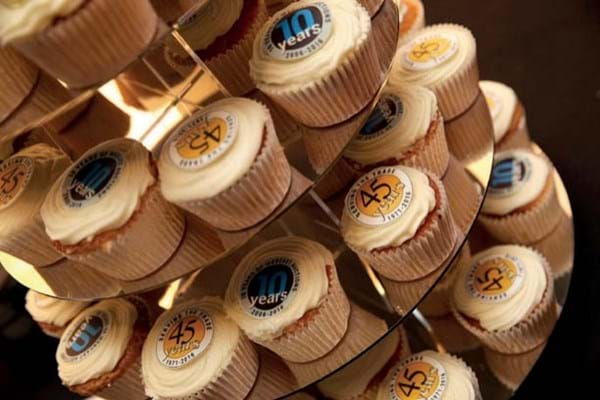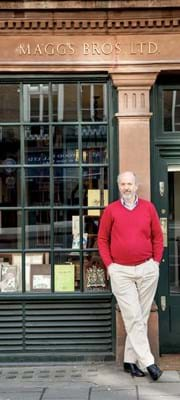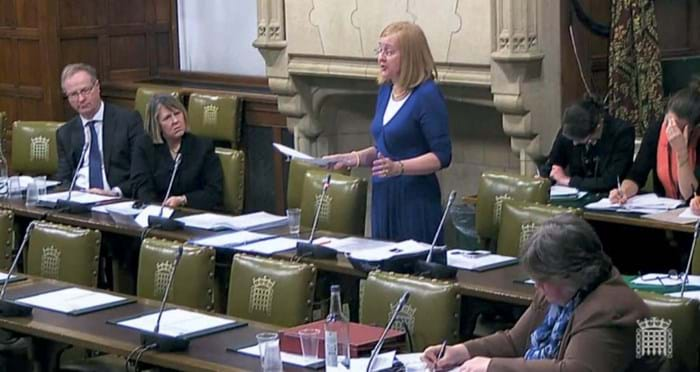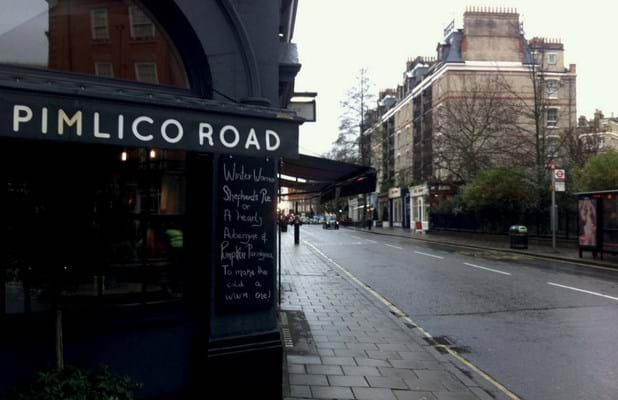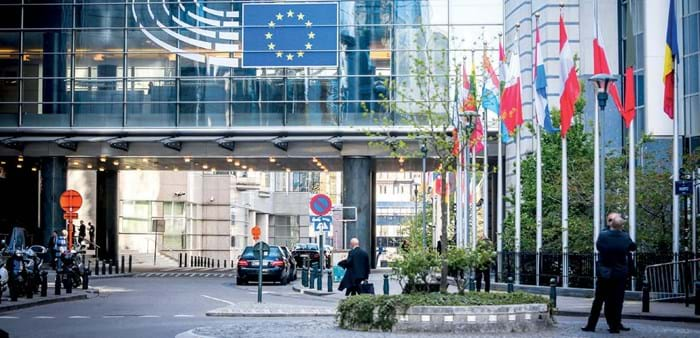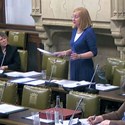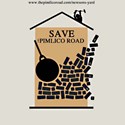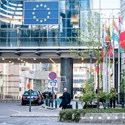Reasons to be cheerful
1 High marks for UK market
In the world ranking of art markets by value of sales, the UK moved up a notch in 2015 to take back the number-two spot in the TEFAF Art Market Report 2016, the industry’s most authoritative set of market statistics.
It accorded the UK a 21% share of the global market, an upbeat news headline that was partly due to the decline of the Chinese market. The latter fell from second to third place (with a 19% share) as the US retained the number one spot (43%).
2 Market boost from Mod Brit art
One area of the UK market that enjoyed a bumper 2016 was Modern British art (see Art Market, page 34- 35). Totals for Mod Brit art for the whole year at London auctions hit a record high, helped in no small part by consignments of major collections including those of David Bowie at Sotheby’s and Leslie Waddington at Christie’s.
The market has also been strong at regional level, with works such a Christopher Wood still-life taking £220,000 at Chorley’s in Gloucestershire and an Eric Ravilious watercolour knocked down for £85,000 at Sworders.
3 Brexit hopes of less red tape
Two competing visions of the future for the UK art market outside the EU exist (see ‘Fearful’, opposite). Some Brexiteers view life after the EU as an opportunity to ditch or revise unpopular laws that emanated from Brussels.
Top of the Brexiteer hit list is the 10-year old Artist’s Resale Right law. Collecting society data released last February revealed ARR has yielded more than £50m in artist royalties collected from auctioneers and dealers over that decade.
It remains to be seen whether the government will adopt or mirror current EU legislation and right now the art market might not be top of its priorities. A more immediate effect of the Brexit vote is a weaker pound and overseas buyers are always to be welcomed.
4 New law heeds the trade’s concerns
After consulting the antiques trade, policy makers drew up a new bill relating to the sale of firearms.
It provided, for the first time, the definition of an antique firearm.
Under the Policing & Crime Bill 2015-2016, due for enactment in 2017, a firearm will be legally an ‘antique’ when it uses an obsolete cartridge type or a firing system contained on a statutory list. This two-tiered approach represents a significant concession to the antiques trade and reflected the hard work put in at the consultation stage.
The suggestion that all antique guns be subject to general licensing was dismissed, as were calls for a blanket ban on the centre-fire system (invented in 1860) on the grounds it “would have a significant impact upon the trade in antique firearms”.
5 Tackling technology
Online sales are estimated to have reached $4.7bn or 7% of the global market value, a trajectory that is expected to gather pace.
This year, dealers in particular embraced technology as never before and the power it offers them.
In February the annual LAPADA conference focused on social media and online sales while an early instalment of the new BADA Talks programme looked at Instagram’s power as a selling tool and brand-builder for dealers. In May, Bonhams launched online-only sales with a single-owner watch collection.
6 Fantastic finds and super sleepers
The regional saleroom scene remains as rich as ever. A man pulls his Chinese enamel vase off eBay – where it was attracting much interest – and sells it instead as a piece of imperial Qianlong Beijing enamel for £50,000 at Woolley & Wallis. A Qianlong vase used as a door-stopper nets £650,000 at Hansons. A taxi driver’s £40 car-boot find turns out to be a £75,000 Indian miniature at Roseberys.
Meanwhile, a marine ivory necklace from the southern Cook
Islands that narrowly avoids a £15 flea market price tag is valued at £60-100 at Ewbank’s but makes £99,000.
Tales of treasure uncovered in prosaic places surprised and delighted this year, encouraging vendors to visit local auction houses.
Pleasant shocks emerged for auctioneers as well as vendors – such as the netsuke rat that took £28,500 over a £300 high estimate at Moore Allen & Innocent, and a 13th century Indian bronze of Ganesh that was hammered down for £114,000 at Special Auction Services over a £100-200 valuation.
7 Momentous moves
A whirlwind of relocations in 2016 showed the trade at its energetic and adaptable best.
While some dealers have been forced to relocate, others have actively decided to find a more appropriate, and usually more affordable, location. Maggs Bros upped sticks from Berkeley Square to Bedford Square and Mallett opted for Pall Mall along with Alan Cristea and Philip Mould.
The BADA continued its modernisation process with the sale of its Knightsbridge premises and purchase of a six-story building near the Barbican.
Not all dealers are looking to downsize or close. Richard Green told ATG of his commitment to remaining on Bond Street while Frank Partridge took up residence in Knightsbridge with a new shop on Frederic Mews, Belgravia.
8Happy anniversary
The antiques trade takes ageing gracefully as a serious pursuit and this year several businesses celebrated milestones with panache.
Alfies Antiques Market hit 40, Sladmore reached half a century, and Apter-Fredericks turned 70, to name a few. Several auctioneers also looked back on decades (or centuries) of history, with Spink at 350 years old, Christie’s at 250 and Fellows at 140.
Antiques Trade Gazette too celebrated 45 years as the voice of the trade – and looked forward to the next 45. Meanwhile the decade of significant anniversaries (the First World War, the Irish Easter Rising, the Titantic disaster and so on) continues to provide a fillip to collecting.
Reasons to be fearful
1 Shake-up over fakes
Fakes have always been with us but this year saw some high-profile works called into question. The culmination of the long-running Cols Rouges affair was only one narrative in a turbulent year for the French trade. As dealers’ association Syndicat National des Antiquaires sought to engage the public in the revamp of its premier fair (the now annual Paris Biennale) the press were more excited by the identification of furniture fakes in Versailles and the arrests of two leading dealers.
The OCBC – the ‘art crime’ division of the French police – are also investigating Old Master ‘fakes’ and in March seized a painting attributed to Lucas Cranach the Elder (1472-1553). An attribution dispute is now in play.
Across the pond in October, Sotheby’s confirmed it had reimbursed the buyer of a $10m Frans Hals portrait. So critical has science become in the authentication process that Sotheby’s ended the year by acquiring Orion Analytical to help deal with this persistent issue.
2 Public and trade irate over ivory
Public awareness of modern ivory poaching rose to new heights in 2016 and with it came increasing ire directed at antique ivory. In the US the so-called ‘final rule’ on the ivory trade was passed while in France new regulations threaten to paralyse the trade through red tape.
Under pressure to make good the Conservative Party 2015 manifesto pledge to prohibit all trade of ivory in the UK, in September environment minister Andrea Leadsom announced a ban on the sale of ‘worked’ ivory produced after 1947.
While this was effectively a restatement of the current UK position through its adoption of the CITES Convention (1975), it angered conservationists into redoubling calls for a complete ban on UK trade in ivory.
Then came the concession: the government agreed to consult the antiques business on the form that proof of age would take, a process that will begin in the new year (see box, p14). Behind closed doors, antiques trade associations are fighting to ensure exemptions are made for antique ivory and antiques that comprise other CITES-protected materials. In a more public declaration of the industry’s case in December, BADA president Victoria Borwick MP made a stirring speech at a debate on the ivory trade in parliament, giving at least some pro-ban advocates alternative food for thought.
3 Stronger arm of the law
The antiques business prides itself on being largely self-policed but in the past year the art and antiques trade felt the encroachment of regulation as never before.
The threatened crackdown on antique ivory sales (see above) was arguably the lead cause for anxiety in 2016. And coming down the track: the Cultural Property (Armed Conflicts) bill which has a potential reach beyond antiquities and HMRC’s announcement of plans for quarterly reporting starting from 2018. Add in Temporary Admissions regulations and Brexit, and it is small wonder that dealers and auctioneers feel increasingly swaddled by red tape.
4 Uncertainty is the Brexit
Aside from the falling value of the pound, there were few visible signs of a ‘Brexit effect’ after the shock result of the June referendum. An ATG round table in January on this matter was split on the pros and cons of leaving the EU, with several participants concerned about Brexit’s potential threat to Britain’s status as an art and antiques entrepôt. As policy makers haggle over hard and soft Brexits and when to trigger Article 50 in 2017, the trade is learning to embrace its uncertainty.
5 ‘Brown’ gets a timely rebrand
There were few signs of a ‘bounce’ for most traditional furnishings across 2016. The Annual Furniture Index (AFI) suggested prices for standard pieces of English furniture had fallen for the eighth successive year.
Equally, it is a fine piece of domestic silver or metalwork that sells for prices close to those of yesteryear.
However, with careful editing of catalogues, better presentation and rebranding furniture sales as ‘interiors’, auctioneers and dealers managed to avoid the rafts of unsold lots that have blighted confidence in the past. And for those keen to furnish in Georgian and Victorian style, the value for money is remarkable.
6 Redevelopment wrangling
The dealers’ struggle to keep doors open has become marked – particularly in the capital where upmarket retail chains eagerly fill the spaces left by long-established independent businesses.
The waning of London’s historic art and antiques hubs was noticeable in 2016 as scaffolding and skips took residence in Mayfair and St James’s. In the building site of Cork Street, landlord Pollen Estate is wooing Contemporary art galleries, leaving more traditional dealers uncertain over the affordability of rents.
In Pimlico Road, Grosvenor Estates’ property redevelopment plans faced opposition from the trade as did Westway Trust’s plans for Portobello Road.
7 Events, dear boy, events
In an increasingly global market, overseas events and scandals are closely watched in the UK.
Book dealers who trade on the West Coast are keeping a concerned eye on the status of autographed materials as a new and apparently restrictive law comes into force on January 1.
Meanwhile, in Germany, the impact of the controversial Kulturgutschutzgesetz is only now being understood. Auctioneers have pledged to move their auctions abroad: so far they are staying put.
When in February, a trio of well-known UK dealers were forced to destroy ivory objects they attempted to import into the US for the Original Miami Beach Show, opinion was split. A deluge of correspondence to ATG ensued (see Dear ATG, p19).
Not all woes are self-inflected. In the wake of mounting terrorism on French soil, including the Nice attack in July, the Braderie de Lille, Europe’s oldest brocante, closed in the face of concerns over security.

